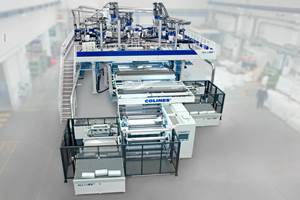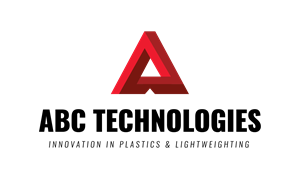The ‘Total Package’ in Thermoforming
Here's how a leading edge custom former evolved from a CAD/CAM business.
A cutting-edge thermoformer whose roots can be traced back to the start of the CAD/CAM revolution: That sums up Computer Designs, a custom thermoformer headquartered in Whitehall, Pa., with plants also in three other locations. Its history explains both its name—somewhat unusual for a thermoformer—and its approach to doing business.
The company was started in the 1980s by Scott McKeever, who is still the president and owner. Before that, McKeever was at the forefront of an emerging technology called Computer-Aided Design/Computer-Aided Manufacturing. Working with Lehigh University in Bethlehem, Pa., he developed training programs on CAD/CAM software for Unigraphic Solutions, now owned by Siemens PLM Software. One of his clients was a medical OEM that wondered how this new technology could help solve a packaging problem. McKeever proceeded to design on the computer an aluminum tool for a thermoformed tray.
A few more clients made similar requests, and since the university wasn’t set up to handle manufacturing, McKeever went out on his own, designing and machining tools and samples in small quantities for a limited client base, then making short production runs from his garage. McKeever outgrew a garage-sized operation soon enough, and opened the plant in Whitehall in 1987.
Today, the Whitehall facility is one of four under the Computer Designs’ family. The business still carries McKeever’s vision of being an engineering-oriented, custom solutions firm where small-company objectives such as customer service and doing it right the first time combine with sophisticated design, manufacturing, and quality-control capabilities more typically associated with larger operations.
At 49,000 ft², Whitehall is at the center of the company’s tool design and manufacturing operations. “All design, development, and pre-qualification of tooling is done in Whitehall,” explains Chuck Ortwein, account executive. The Pennsylvania facility has three large machining centers. The tool room runs two shifts; the first is manned, the second is “lights out.”
The company is growing steadily. Sales in 2013 were north of $20 million. The company experienced a brief dip in sales when it lost a big automotive client as that market tanked in 2009-10, but has grown steadily since.
For Computer Designs, it all starts with the tool. “What other thermoformers consider to be finished tools do not meet our standards,” states Paul Treible, v.p. “Our molds are polished to produce finishes that are as attractive as they are functional. This facilitates the flow of materials to achieve proper wall thickness and integrity.”
In Whitehall, finished tools are placed in one of three thermoformers from SencorpWhite, Hyannis, Mass., capable of producing packaging in part sizes from 31 to 60 in. and at draws to 6.5 in. Computer Designs has also developed its own quick-change master tooling system that permits total product changeover times in as little as two hours.
These capabilities are mirrored in Computer Designs’ three other plants: 46,000 ft² opened in North Carolina in the early 2000s; an 85,000 ft² facility in Arizona in 2008; and its newest 44,000 ft² operation in Puerto Rico that came on stream last year. Also shared among the four plants is a Total Quality Management Program that relies on an ERP system with a customized intranet portal that keeps all aspects of the operation—from design to machining to thermoforming, shipping, inventory, etc.—and all of Computer Designs’ 100+ employees on the same page, notes Greg Leyfert, the company’s systems administrator.
“The idea is to give all associates a sense of continuity,” explains Treible. Jokingly, he adds, “Our plant in Puerto Rico may be literally on an island, but we don’t want them on an island from a business sense, in that it’s not a stand-alone facility. We have well-trained people at all four locations and believe that we need to give them all the tools necessary to perform at a high level.”
BIG IN MEDICAL
The company’s emphasis on precision has resulted in a slight shift in its business over the years. At one time, Computer Designs did quite a bit of packaging for automotive, notably transportation trays and components. Now, while it still works with automotive and also does packaging for consumer products and dunnage, about two-thirds of its business is in furnishing innovative packaging for medical-device OEMs. “We didn’t really make a strategic decision to move toward medical,” states Treible. “We made a strong commitment to beefing up and documenting our quality about four years ago, and the expertise that resulted lent itself to medical OEM applications.”
Computer Designs also has a consultative, relationship-based approach to selling. “Our business is an extension of our customer’s,” is how Treible puts it. “We work together with packaging engineers to develop solutions to whatever challenges they might have.”
Adds Ortwein, “These challenges vary from customer to customer. Some may be looking at reducing the footprint of the package, others might want to add components to the package, or reduce material or even change material.” Where materials are concerned, Computer Designs uses a wide range of rollstock, including ABS, HDPE, HIPS, PP, and PET. While Computer Designs has a full range of material on the shelves and ready to go, it also relies on its sheet suppliers to carry its inventory at their locations.
One might think a relationship at this level of intimacy would limit the number of customers Computer Designs could conceivably serve. Yet Treible says the company has “well over 100 customers with an average order of 10,000 pieces.”
“The customer is seeking a partner that understands ‘the total package,’” Treible elaborates. “From the design of the tool to its execution to the forming of the package itself….that’s where we deliver. In fact, at least 95% of the time we pass the ‘ship test’ the first time a product comes out of the mold.” Near its thermoformers, Computer Designs relies on homemade testing equipment that checks finished trays at least three times for thickness uniformity and environmental stress-crack resistance.
Those kind of capabilities are also important to slash delivery times. Some processors may consider only the production floor as the area where time can be saved so that orders can be shipped more expeditiously. Computer Designs takes more of a total-systems approach. For example, the company is using outside 3D printing services for prototyping full molds or key components, says Jon Leyfert, engineering manager.
This lets the company prove out its design concepts more quickly, and “also gives us more leeway to take chances while providing us the opportunity for more design creativity and innovation than would be possible if we were cutting aluminum,” Leyfert states.
Related Content
Young Stretch-Film Processor Bets on Nanolayers
Going up against companies with as much as double its capacity, young stretch-film processor Zummit believes that new technology — notably 59-nanolayer films — will give it a competitive edge.
Read MoreABC Technologies to Acquire Windsor Mold Group Technologies
The Tier One automotive supplier with compounding and blowmolding machine capabilities adds the 50-yr-old molder and moldmaker.
Read MoreFormulating LLDPE/LDPE Blends For Abuse–Resistant Blown Film
A new study shows how the type and amount of LDPE in blends with LLDPE affect the processing and strength/toughness properties of blown film. Data are shown for both LDPE-rich and LLDPE-rich blends.
Read MoreConsistent Shots for Consistent Shots
An integral supplier in the effort to fast-track COVID-19 vaccine deployment, Retractable Technologies turned to Arburg and its PressurePilot technology to help deliver more than 500 million syringes during the pandemic.
Read MoreRead Next
Beyond Prototypes: 8 Ways the Plastics Industry Is Using 3D Printing
Plastics processors are finding applications for 3D printing around the plant and across the supply chain. Here are 8 examples to look for at NPE2024.
Read MoreFor PLASTICS' CEO Seaholm, NPE to Shine Light on Sustainability Successes
With advocacy, communication and sustainability as three main pillars, Seaholm leads a trade association to NPE that ‘is more active today than we have ever been.’
Read MoreMaking the Circular Economy a Reality
Driven by brand owner demands and new worldwide legislation, the entire supply chain is working toward the shift to circularity, with some evidence the circular economy has already begun.
Read More






















 (2).jpg;maxWidth=300;quality=90)













